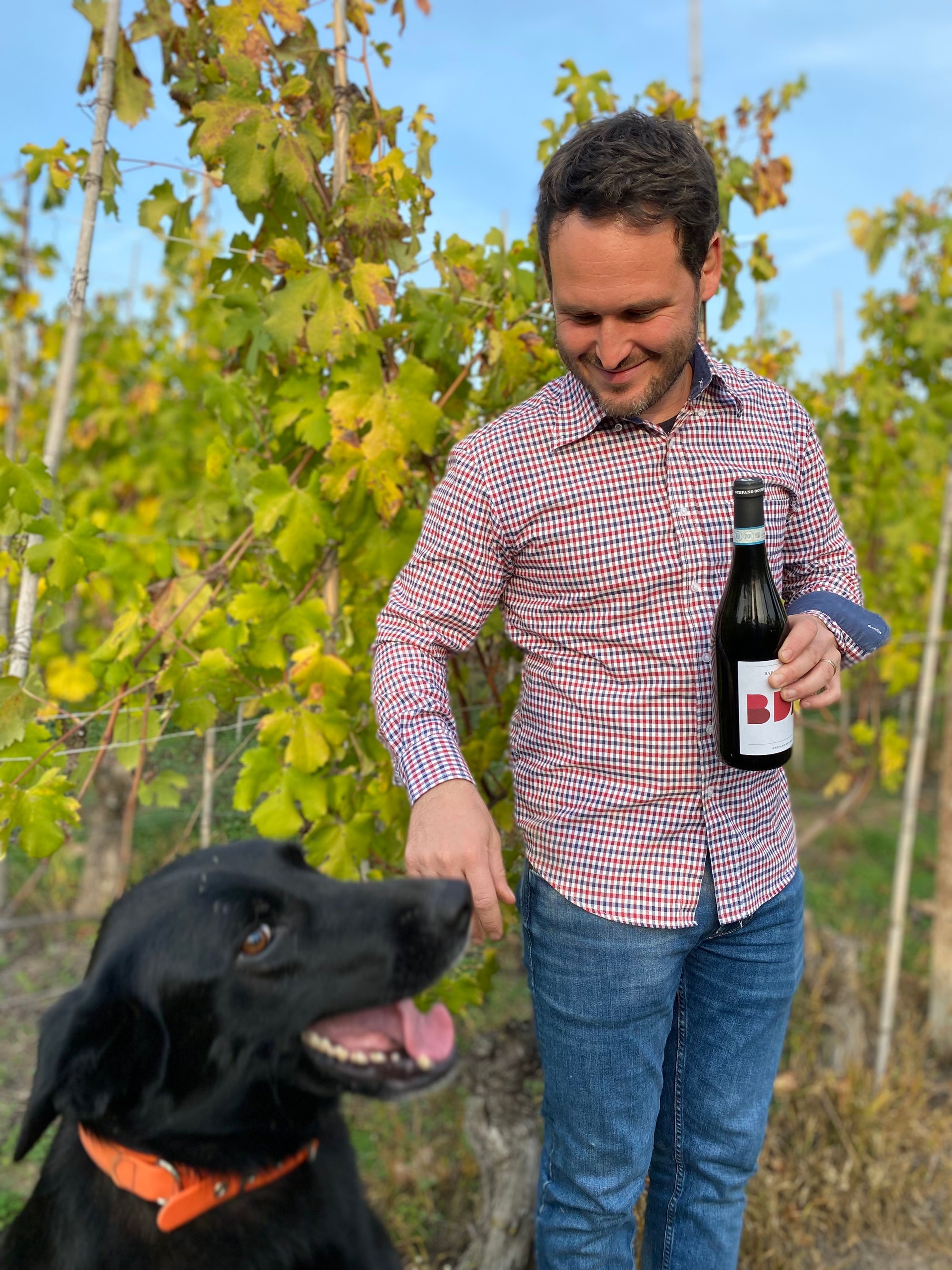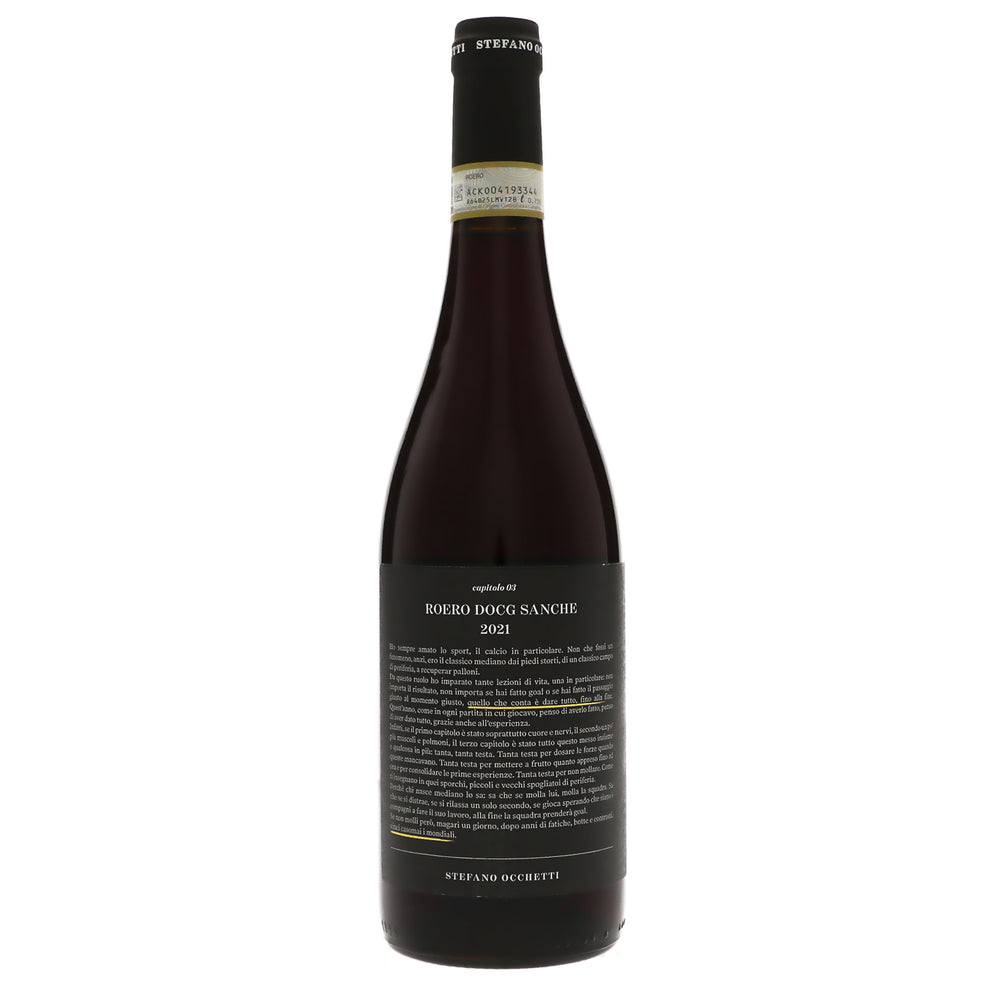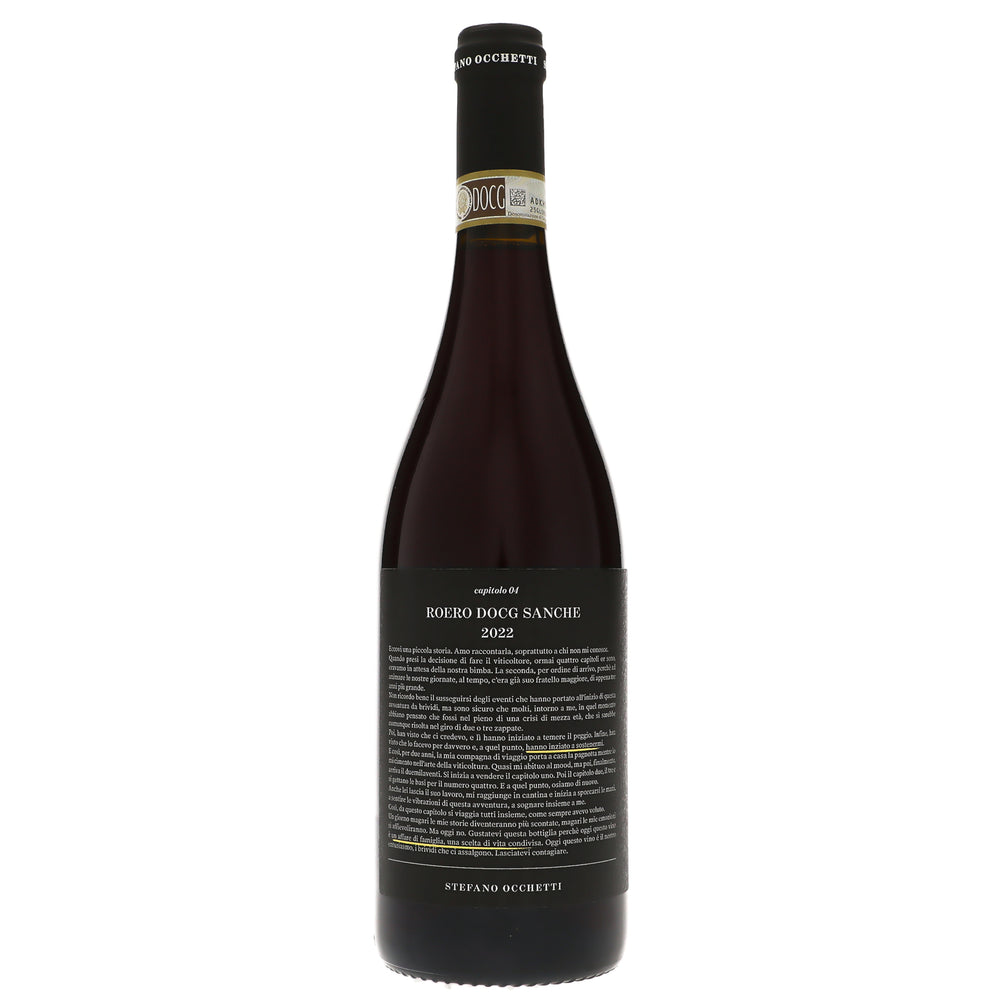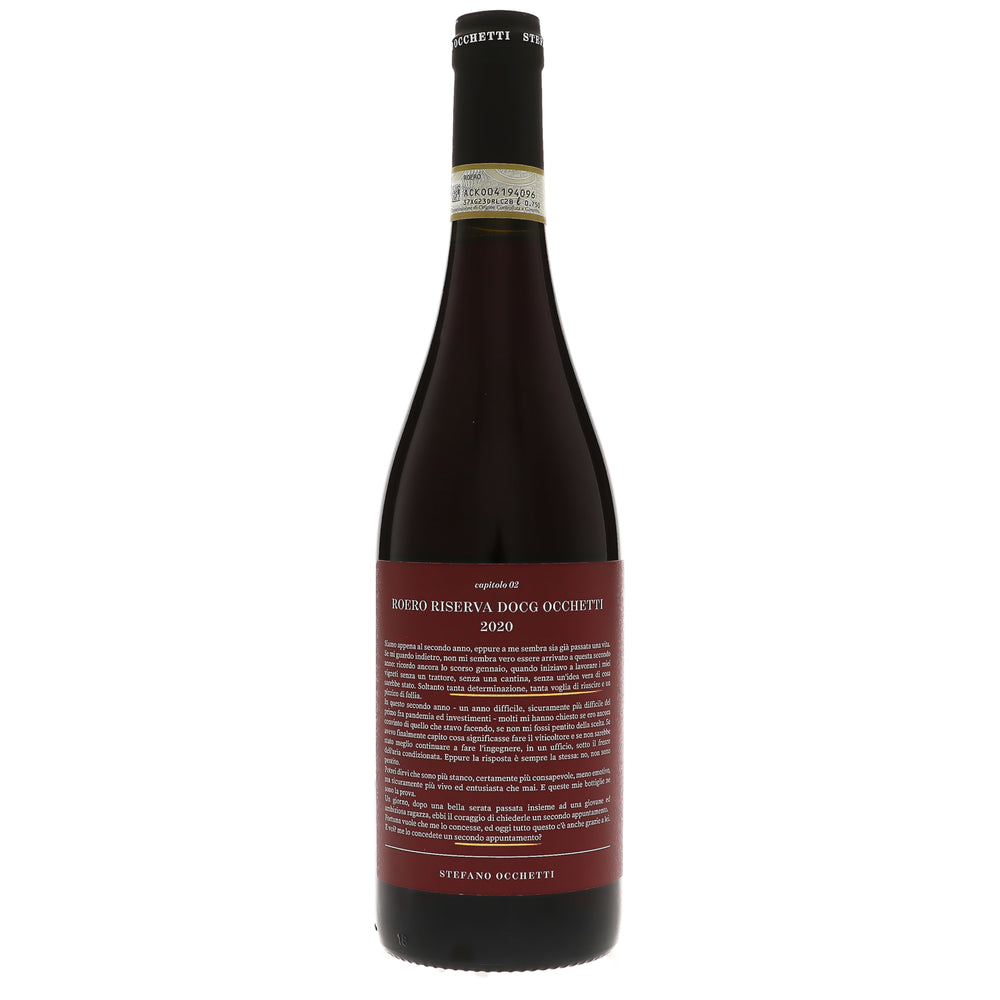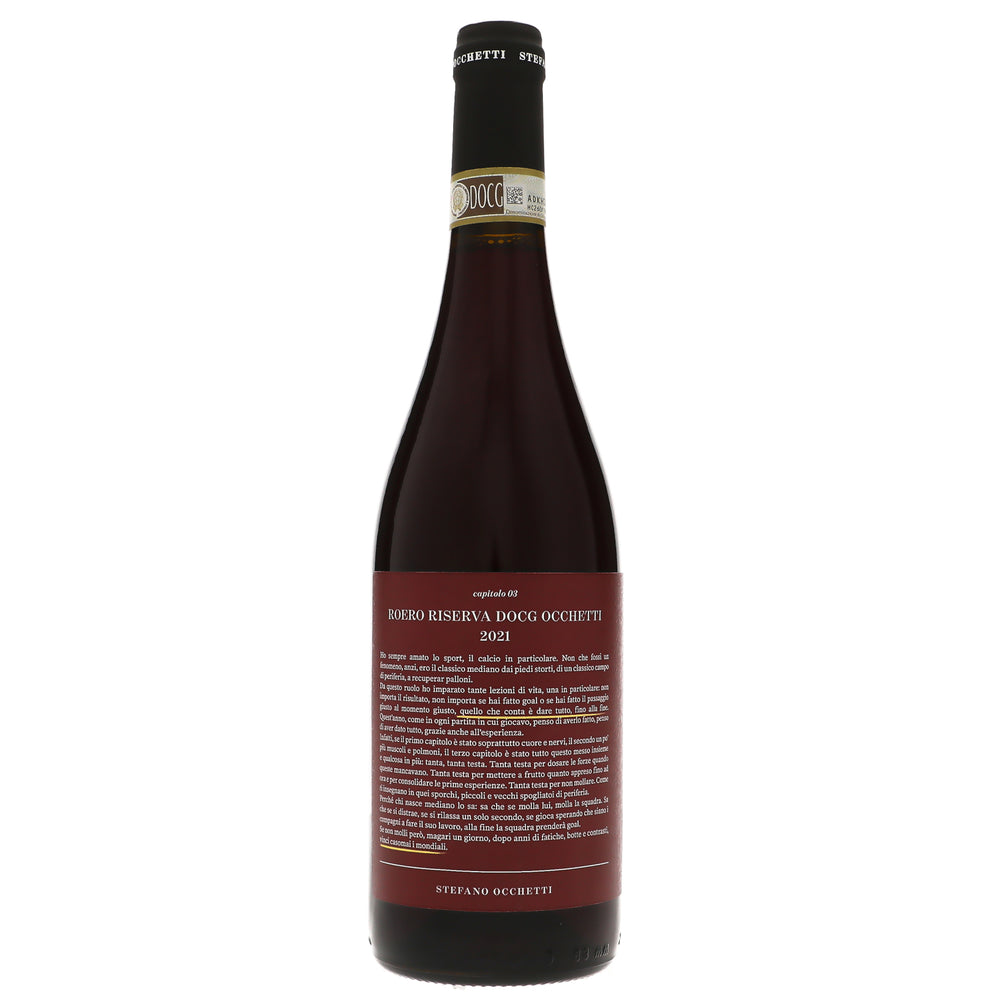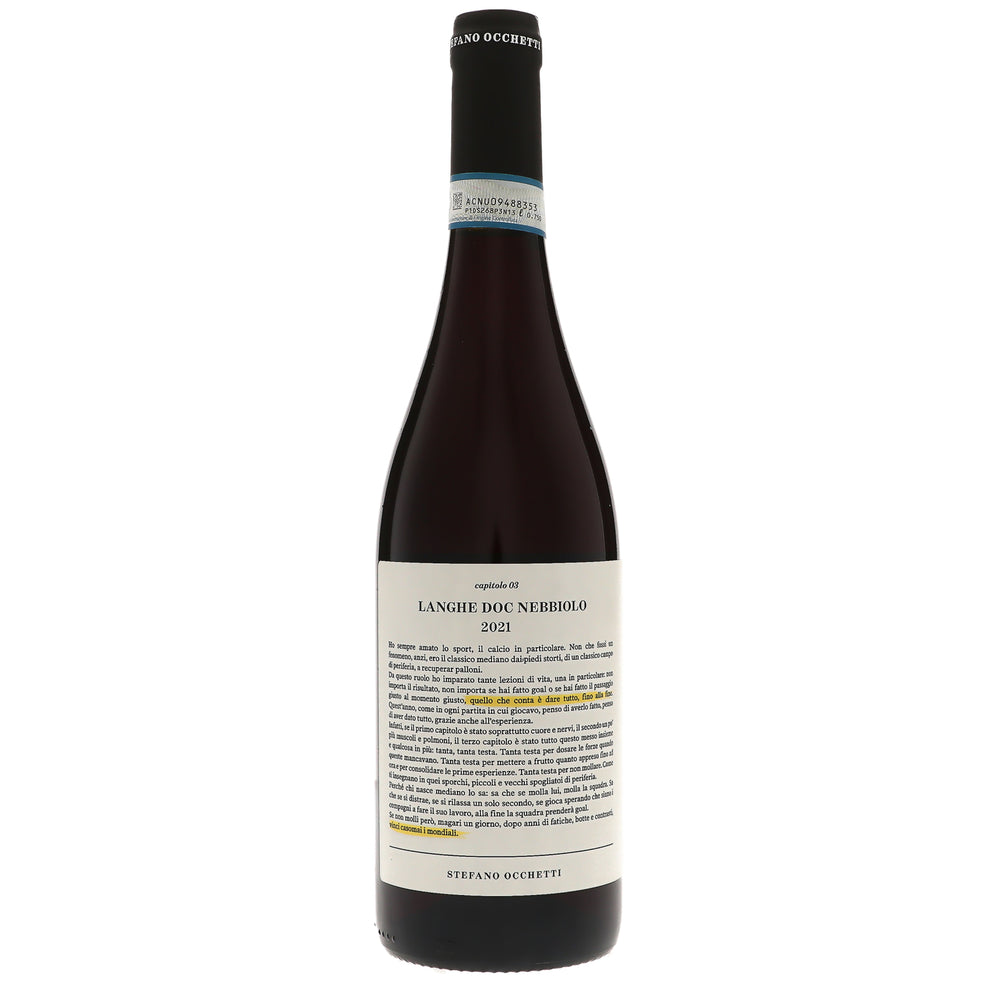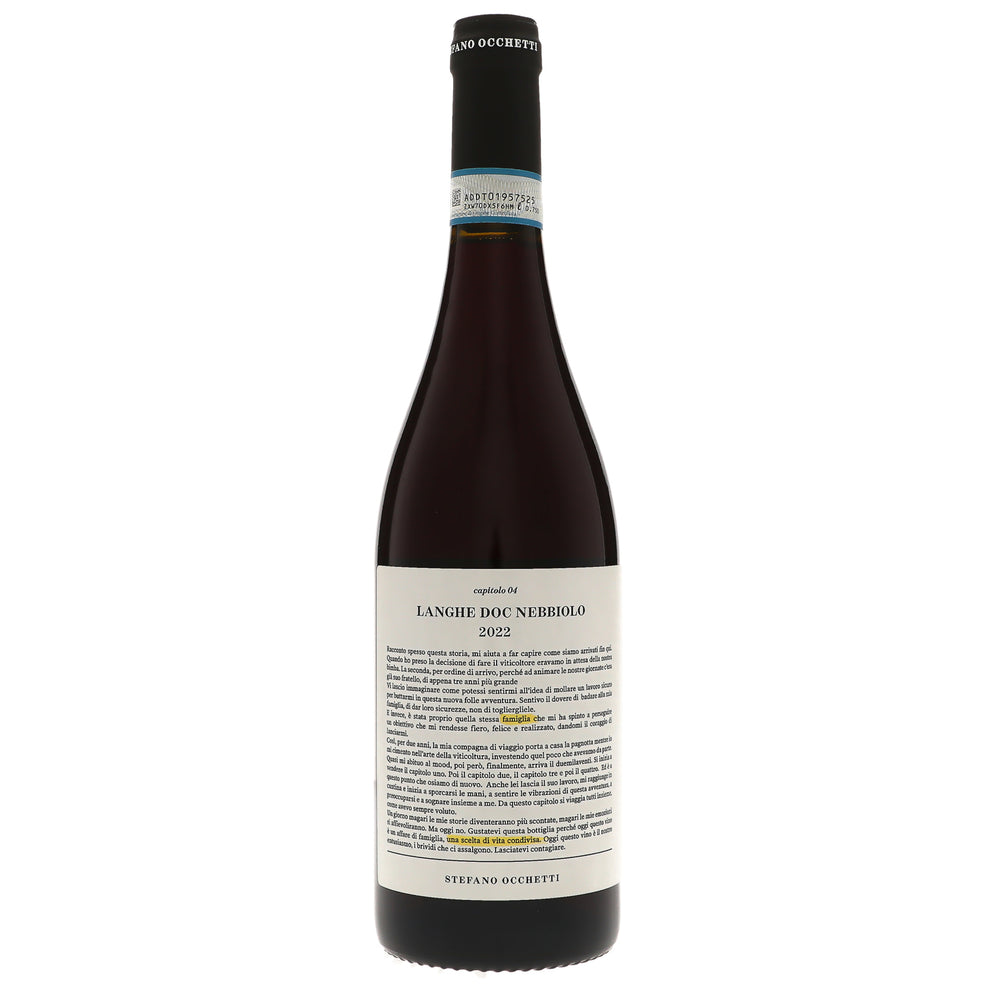Stefano Occhetti
Piedmont
To make wine is not a job, per se - you can see it as a passion, a mission, a way of life. Stefano Occhetti, however, views it as a story: “Telling the story, it’s almost a game…but a serious game, to tell the story behind it. Every year I write a new chapter.”
Stefano, a former civil engineer, admits that he started at zero when he started to spend more time in his grandfather’s vineyards in Roero. Though he grew up in the village, vineyards were more of a playground, but as an adult he started to notice how his family and his neighbors would work tirelessly in the vines. “My father was a builder, so the vineyard was never a focus - I was a drinker of wine, so I had an idea; but when I returned to my grandfather’s vineyard, I saw I knew nothing. And that was exciting!”
Quickly becoming entangled in the vines, he spent 3 months in the vineyard and decided never to look back; he quit his job, while his wife kept hers to support them. Stefano’s first vintage of his own label was 2019; he worked one hectare and made around 4000 bottles, largely by himself with some help from his wife. His uncle served as a helping hand, teaching Stefano how to prune and hone his eye in the vineyard, and with his friend’s help in the winery the first vintage was an exciting beginning. “I felt quite good in the winery if I made vinegar,” Stefano jokes, “But the objective was to make wine.” He emphasizes that last word, as he had fallen back in with an old friend who had taken up work as an oenologist, and together they drank many wines of their neighbors and surrounding regions to learn and develop a reference point for Stefano to start at. He admits he “was almost a stalker of [his friend] for a year, but he accepted it!” They made a good pair, as they shared an ideal: to make wine without dogma, and to make it territorial; local.
Looking at his native Roero, Stefano has a very clear view now of what he wishes to achieve, and what Roero brings: “Roero is freshness, but with structure. Maybe it is more Valtellina than Barbaresco.” He is battling the law to allow for a wine to be called “Roero Nebbiolo” rather than “Langhe Nebbiolo,” for that very reason - he feels, as we do in tasting his wines that the expression is exquisite and very unique to the region. Not to mention, many equate Roero with Arneis, the local white grape that for most is not held in high regard (outside of a few stellar producers). “Eight hundred hectares all around of each Nebbiolo and Arneis, but for me the focus is Nebbiolo; I make some Arneis, but it is not my focus - it does not keep the ‘Roero’ the way Nebbiolo does, and that is my objective: to keep the Roero, to feel it.”
Viticulture & Vinification
By 2022 the Occhetti winery was in full tilt, his wife quit her work to join Stefano full time, forming a true family winery; “A small team,” Stefano laughs. “Maybe in 2024 we will have a bigger team - one additional hand!” They together farmed 2 hectares, with another full hectare coming on line in 2025. 0.8 of the hectares are within Occhetti, which has been in the family for 80+ years; another full hectare of 70+ year-old vines are in Sanche which is 100 meters from their small house. Across all vineyards the vine age averages 40-50 years. With the old vines, Stefano admits he must continue to learn to be “More respectful, more caring for what I have. I’m not biodynamic, but, you could say I am BD-curious! I just hope to improve every day.”
Occhetti is smooth, full of limestone. Sanche is super sandy and steep, to the point that it can not be worked by tractor. This works out, as the rows are only 1 meter apart, the vines tunneling deep into sedimentary soils chock-full of fossils. Cover crops are planted throughout Occhetti but incredibly hard in the sands of Sanche, which he calls “the Rive Gauche of Roero.”
In the winery, all fermentations occur naturally in concrete botti; for the Sanche only, the cap is submerged, as the tannins are lighter and softer given the sandy soils. After moving to large oak barrels, Occhetti will age longer than Sanche, 32 months to 20 for Sanche. The Langhe Nebbiolo was originally aged 20 months, but Stefano has shortened the aging to 16 months, desiring even more freshness.
There’s a gorgeous natural complexity to what’s inside Stefano’s bottles. “When I say I look for complexity, this does not mean just structure or body; it means range of aroma as well - in Roero you can find a wine more complex than others, but maybe not so much of what we call structure.”
We’re introducing the wines of only his third chapter within the story, but Stefano’s a quick learner, and through his own experimentation has started to truly hone his vision for what he wants to represent with his wines, each bottle with that year’s story of the wine written right there for us to read.




